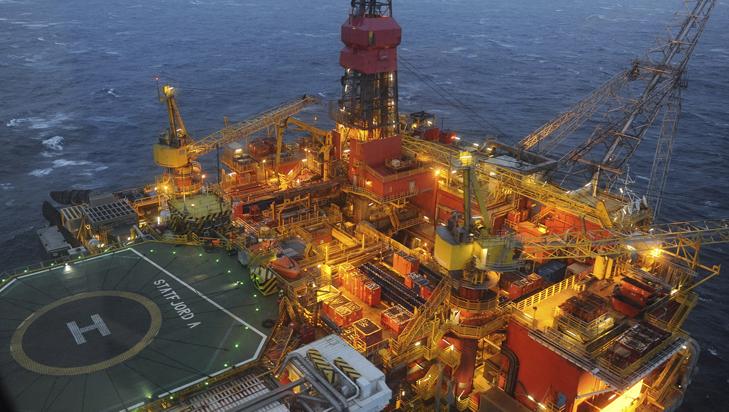
STATOIL: DOUBLE ERROR

After the failure of its risky exploration strategy this year, Norwegian oil firm Statoil is cutting costs as fast and deep as it can to preserve cash for dividends - and may be jeopardising future production in doing so, industry insiders say.
Statoil took a big gamble by committing major resources to what it hoped would be new discoveries in Angola, the Norwegian Arctic and the U.S. Gulf of Mexico. They all failed, leaving two Tanzanian gas fields its only major finds in 2014.
With no new prospects to drill, and a 35 percent drop in the price of oil since June, the company is now paying hundreds of millions of dollars to cancel or suspend a third of its exploration fleet in order to find the cash it needs to pay its dividend, which so far this year equalled nearly all of its 30.9 billion crown ($4.46 bln) net profit.
"They have gambled and...bet on the wrong horses," says Hilde-Marit Rysst, the head of labour union SAFE, which has thousands of employees with Statoil and its contractors.
"They have spent too much and made too many commitments."
Statoil's problems are several but the root of them can be simply put: it spent too much money on long drilling contracts in exploration areas before ensuring there would be enough work. Additionally, it took out those contracts at the top of the market, paying record day rates to secure capacity.
The company also introduced a quarterly dividend in 2014, bowing to pressure from investors, and put extra burden on cash flow already strained by years of heavy investments.
The dividend increase came even as its production cost per barrel jumped by a quarter since 2009, while oil prices have fallen. Analysts estimate Statoil needs oil to rise back to $110 per barrel for it to finance investments and dividends from its cash flow.
Oil prices recently slumped to fresh lows around $71 a barrel after OPEC decided not to cut production despite a huge oversupply in world markets. Analysts say Statoil's cash flow at this price is already negative before dividends.
Compounding the company's difficulties, Statoil is without a permanent chief executive. Helge Lund left in October for rival BG Group - where his pay could be almost 10 times higher - and Statoil is currently under the helm of former marketing, processing and renewable energy chief Eldar Saetre.
"DOUBLE ERROR"
At the start of the decade Statoil revamped its exploration strategy, faced with reserves that were starting to dwindle.
Instead of small, safe projects, the company went after what exploration chief Tim Dodson called "high impact prospects" around the globe, boosting spending and taking on more risk.
The strategy advocated by Dodson - a 29-year veteran of Statoil - worked for several years and the company made big finds in Brazil, Canada, Norway and Tanzania.
With its failure to make big finds this year, Statoil has taken six rigs out of use, mainly in Norway and also Angola, though it says some of these are short-term. Exiting Angola alone cost it $350 million.
The price of many still-operational rigs is eye-watering. One in Tanzania costs more than $700,000 a day to run even as charter rates have fallen this year to below $400,000 per day.
"They chartered these vessels at the peak of the cycle and they're cancelling contracts at trough of the cycle. It's a double error," said John Olaisen, an analyst at brokerage ABG.
"They're panicking ... They should leverage up to avoid cutting too much."
Less exploration will cut Statoil's reserves while reduced drilling on existing fields could cut into recovery rates and its output, analysts said. Spending cuts elsewhere, particularly maintenance work on mature fields, could also affect its output.
NO DIVIDEND CUT
Though under pressure, the company will stand by its dividend payments, say analysts who met Saetre on Thursday.
"Mr Saetre said he would consider a great many options before he cuts the dividend," said Swedbank analysts Teodor Nielsen, who attended the meeting. "We got confirmation that the dividend is a top priority."
Even with such generous dividends still in prospect, the Statoil stock is down 4 percent in the past year. Over the past three years, it is down by 7 percent, underperforming all majors, including BP, which was weighed down by the cost of its Macondo spill.
BP, Shell, ExxonMobil and Total are all cutting costs, laying off staff and selling assets to cope with lower oil prices and pressure from investors for higher returns after their 10-year spending spree.
But Statoil is cutting more than the others because its costs are so much higher.
Statoil's Dodson declined to be interviewed and the firm said it would announce 2015 exploration plans in February.
"They have spent and spent but should have thought more about the long term," said Leif Sande, the head of labour union Industri Energi.
"In past cycles they always said they would do better next time, but when (the oil price) goes up again they forget about that."
reuters.com





